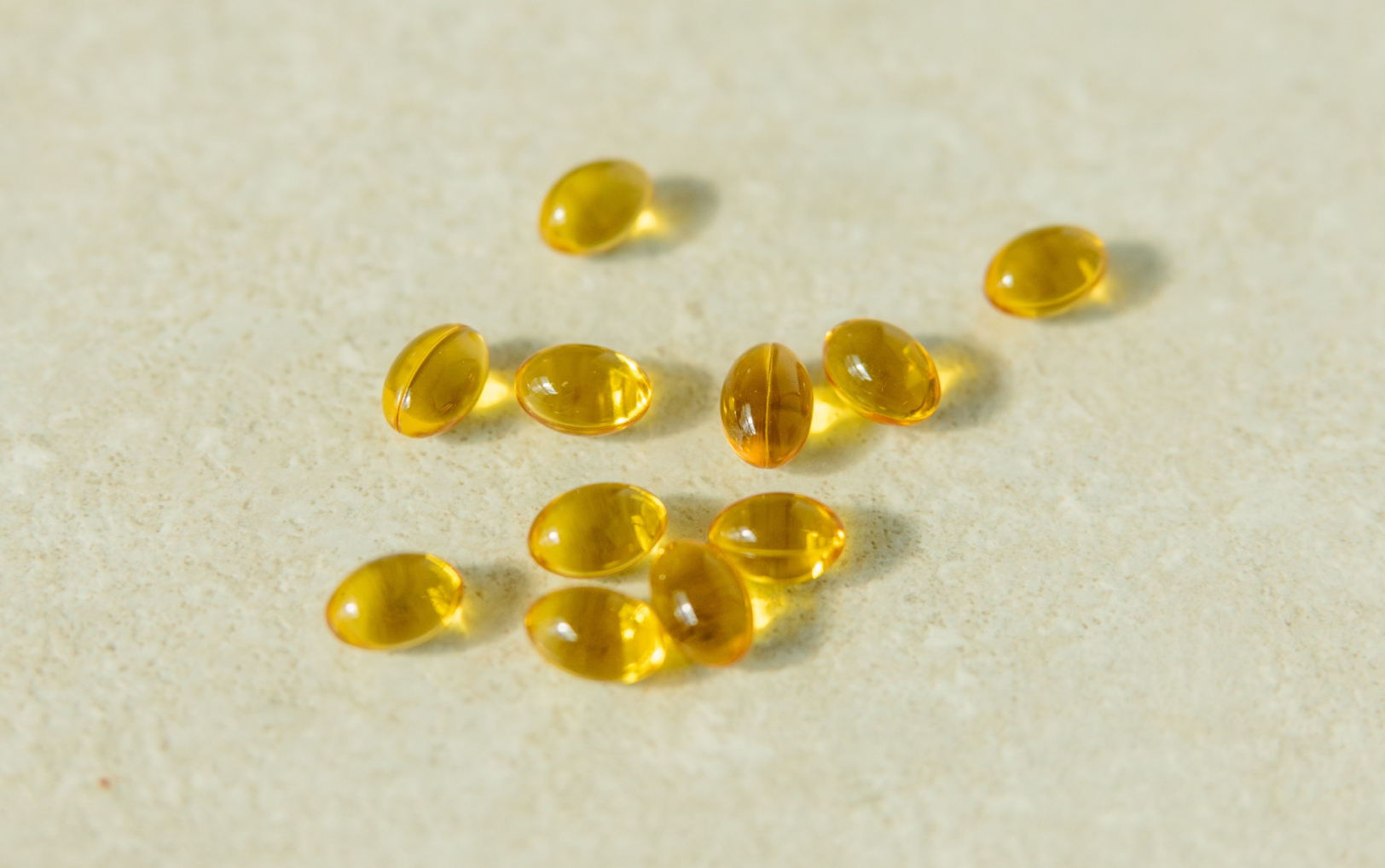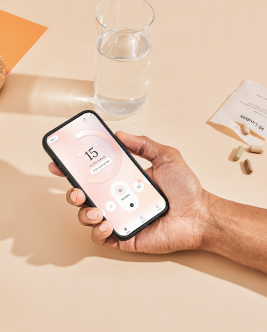science
Folate vs. Folic Acid: It Pays to Know the Difference
On This Page

Folate and folic acid are 2 forms of the essential vitamin B9, which are crucial for pregnant women. Learn their unique risks & benefits before supplementing.
Folate and folic acid are 2 forms of the essential vitamin B9, which are crucial for pregnant women. Learn their unique risks & benefits before supplementing.
Folate and folic acid—two different forms of the essential vitamin B9—are used interchangeably so often that most people assume they are the same. In fact, even many doctors and nutritionists remain unaware that folate and folic acid have vastly different paths in the body. According to recent studies, ingesting the wrong form may have unintended negative effects for some people.
We’ve researched what the latest science has revealed about the differences between folate and folic acid. So, now that you’re aware of this common misconception, learn how to avoid any undesirable side effects from choosing the wrong form for you. Here’s what you need to know to make an informed decision about your supplementation.
What’s the difference between folate and folic acid?
The main difference between folate and folic acid comes down to their sources, forms, and bioavailability. Yet, they are both important for proper DNA synthesis, cell division, and the formation of healthy red blood cells.
Folate
Folate is the natural form of vitamin B9 that is commonly found in many whole foods. It is naturally occurring and can be obtained from sources such as leafy greens, beans, eggs, citrus fruit, avocados, and beef liver. Also, folate is more easily absorbed and utilized, whereas folic acid may have potential drawbacks for some individuals with certain genetic variants. The most active form of folate can also be listed as 5-methyltetrafolate on supplement labels.
Folic Acid
On the other hand, folic acid is a synthesized version of vitamin B9 that is added to processed foods and is the common version used in most supplements. Folic acid has a molecular structure that is nearly identical to folate, and it is often used interchangeably with folate in nutritional contexts.
So, why was this synthetic version of folate created? Well, in 1998, the FDA required that grain products be “enriched.” From that came foods such as flours, breads, and breakfast cereals being fortified with folic acid. The goal of this regulation was an attempt to reduce the prevalence of Neural Tube Defects (NTDs), a common birth defect that had shown some connection to the mother’s vitamin B9 intake. According to a 2011 paper in the scientific journal Reviews in Obstetrics and Gynecology, there was a decrease in the prevalence of NTDs in newborns within mere months of the fortification program. For this reason, folic acid is included in many prenatal vitamin formulations. However, the story doesn’t end there.
With time, scientists have learned more about folic acid’s effects on the body. As some recent studies have shown, the very tiny differences between folic acid and folate have a huge impact on how the body can process them.
Excessive folic acid intake is correlated with significant health risks
Recent research shows a correlation between elevated levels of folic acid and an increased risk of potential health issues. The results from a double-blind, placebo-controlled study conducted between 1994 and 2004 suggested that those supplementing with 1 mg/day or more of folic acid showed an increased risk of various health issues. The great news is that Care/of's B Complex supplement only contains 240 micrograms of dietary folate equivalents (DFE) which converts to only 0.24mg. And, our prenatal only contains only 0.6mg of DFE which is 100% of the Recommended Dietary Allowance for those who are pregnant and/or lactating. Both doses are well below the amounts studied to have potential negative effects.
It is important to remember that folic acid started to be widely consumed only recently. Too much folic acid and too little folic acid (deficiency) can both be detrimental to optimal health. There is still plenty of research that must be done before we have a complete understanding of all potential outcomes. It likely will lead to recommendations that are based on an individual’s unique genetics and ability to convert folic acid into its active form versus allowing it to build up. They will need to be balanced according to one’s lifestyle, health goals, and diet.
Depending on your unique circumstances, folic acid (in moderation) may be advisable, especially if you are pregnant. Fortunately, folate-rich foods and methylfolate supplements are available. With proper knowledge and planning, you may be able to avoid the need for a vitamin B9 supplement altogether. Read on to learn more.
Let’s get technical
For those eager to understand the scientific details, here is more about how the body typically processes folic acid, and what makes it potentially dangerous.
Before folic acid can be utilized by the body, it must undergo two conversions — to dihydrofolate (DHF) first and then tetrahydrofolate (THF). Only then, can THF be converted to L-methylfolate, which is the end form of folate that the body requires for many key functions.
Methylenetetrahydrofolate reductase (MTHFR), is the key enzyme that regulates this conversion process. However, it is estimated that up to 60% of Americans have genetic variations that reduce their ability to convert L-methylfolate from folic acid on their own. For those who have this genetic variation, supplementing with folic acid may lead to varying amounts of the converted L-methylfolate form, potentially leaving the body with less than it requires. Furthermore, it could lead to a build-up of the folic acid form in the body.
In terms of providing the body with available nutrients, dietary folate—the form found in whole foods—is preferable to the synthetic folic acid found in supplements and processed foods. It is both more readily available to the body, and it does not pose the same potential risks of build-up. This is why supplementing with L-methylfolate can also be considered superior to using folic acid for those that may not get enough from the diet because it does not require activation and does not accumulate in the blood like folic acid can.
When someone’s intake of folic acid exceeds their capacity to process it, it can overwhelm the liver and end up in the bloodstream.
Potential side effects of folic acid supplementation
Folic acid supplementation, while beneficial for many individuals, has the potential for certain side effects. One notable concern is that high levels of folic acid can mask a deficiency in vitamin B12. If a clinical deficiency of vitamin B12 remains unaddressed, it may increase the risk of developing cognitive issues.
The importance of folate
When your diet includes adequate levels of folate, you are supporting the smooth execution of some miraculous cellular functions: namely DNA formation and cell division. Folate is crucial to these functions, and many more.
For many, it is possible to meet the body's folate requirements through a healthy, varied diet. However, certain dietary restrictions or health conditions may increase the risk of folate deficiency, and associated symptoms.
It is commonly believed that women of childbearing age need increased amounts of folate, as folate deficiency during pregnancy can contribute to low birth weight and neural tube defects (including spina bifida). If you are planning to become pregnant or pregnant already, folate is highly important for avoiding common birth defects. This is why it is a common ingredient in many prenatal vitamins. Women expecting to become pregnant should aim for 600 mcg (0.6 mg) of folate daily.
People with a history of alcohol dependence or digestive disorders are also at an increased risk of folate deficiency due to potential absorption issues.
Folate and Folic Acid in Pregnancy
During pregnancy, the most important nutrients, by far, are folate and folic acid. Since folate and folic acid are essential for DNA synthesis and cell division, it is necessary for the normal growth and development of the fetus.
Importance of Folate and Folic Acid in Pregnancy
The demand for folate significantly increases during pregnancy. Adequate intake of folic acid is crucial for the development of the neural tube in the early stages of pregnancy. The neural tube is what eventually forms the baby's brain and spinal cord.
Women who maintain a healthy diet with sufficient folate intake throughout their childbearing years can potentially lower the risk of giving birth to a child with a birth defect affecting the brain or spinal cord.
Recommendations for Folate and Folic Acid Intake During Pregnancy
The recommended intake for folate and folic acid during pregnancy is generally around 600 mcg of dietary folate equivalents (DFE) per day. This can be achieved through a combination of folate-rich foods, such as leafy greens, beans, and citrus fruits, as well as folic acid supplementation.
Folate, Folic Acid, and Cardiovascular Health
Aside from folate and folic acid's role in DNA synthesis, it is also equally important for cardiovascular health. One of the key benefits of folic acid is its ability to help manage the levels of homocysteine in the body. Homocysteine is an amino acid that can be harmful to the cardiovascular system if present in large quantities.
It’s important to note that high doses of folic acid should be taken with caution. The upper limit for folic acid intake is typically set at 1000 mcg per day, as higher doses can mask a vitamin B12 deficiency.
What are some signs of folate and folic acid deficiency?
Folate and folic acid deficiencies are relatively rare since they are naturally present in a variety of foods. However, certain factors can increase the risk of deficiency. Consuming excessive alcohol, having pre-existing absorption issues, being pregnant, and having specific genetic polymorphisms can all contribute to an increased risk of folate deficiency.
If you think that you might be at risk of folate deficiency, keep an eye out for these common signs: anemia, changes in the pigmentation of the skin, hair, and nails, and ulcers of the oral lining.
Recognizing that you may be at risk is the first step towards making positive changes to your diet, and deciding whether supplementation might be necessary. The National Institute of Health recommends a daily intake of 400 mcg (0.4 mg) for adults and children older than 4 years old.
Which foods are rich in folate?
Folate is found naturally in a wide variety of foods, including some vegetarian options. A 3-oz. serving of beef liver contains over 50% of the daily recommended intake for folate, making it an excellent source. If you’re vegetarian, you can actually get 33% of your daily folate intake with a ½-cup serving of boiled spinach.
A ½-cup serving of avocado offers up approximately 15% of your daily intake. Other dark green vegetables such as broccoli, asparagus, and mustard greens aren’t far behind. They supply approximately 13-22% of the daily recommended folate intake. (Estimates courtesy of the National Institute of Health.)
Many grain products, such as bread and cereal, are fortified with folic acid. However, as previously noted, the body will potentially synthesize and absorb folic acid less efficiently than folate. For this reason, consuming fortified foods may not necessarily increase the levels of L-methylfolate your body needs. It’s always best to go for natural, whole, unprocessed foods.
Considerations for Vegetarians and Vegans
For vegetarians and vegans, considerations regarding folate and folic acid intake are important. If you follow a whole food plant-based diet that includes a variety of fruits, vegetables, legumes, and whole grains, you are likely to obtain the amount of folate that your body needs. However, if your diet primarily consists of processed foods, it may be beneficial to consider a supplement to ensure sufficient intake.
It is also important for those following plant-based diets to pay attention to their vitamin B12 levels, as this nutrient is mainly found in animal-derived foods. Plant-based eaters may benefit from B vitamin supplementation, especially B12, to avoid any deficiencies.
Supplement with folate to optimize your health
If you tend to consume plenty of folate-rich foods, then you are likely well on your way to adequate folate consumption. However, we all need a bit of a B-vitamin boost now and again. This is especially true for expecting mothers. You can safely increase your folate intake if you carefully avoid supplements labeled folic acid—look instead for methylfolate, a superior form of folic acid for most.
If you are concerned about whether you are getting sufficient folate, speak to your doctor or take an online survey for a personalized recommendation.



